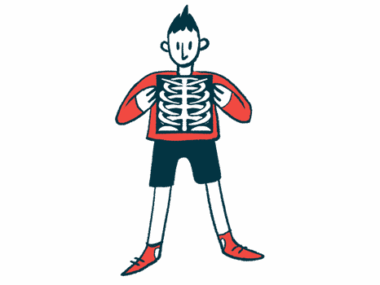‘Opportunistic’ skin infection called under-recognized Cushing’s problem
Man with Cushing's syndrome infected with mycobacterium from fish tank
Written by |

A man with Cushing’s syndrome developed a rare Mycobacterium szulgai skin infection after cleaning his tropical fish tank, a study in China reported.
This mycobacterium is typically found in environmental water sources, including hospital taps, ice machines, fish tanks, and swimming pools, and most reported cases of infection in humans involve the lungs.
“To the best of our knowledge, our case is the first M. szulgai infection reported in a patient with Cushing’s syndrome in China,” the researchers wrote in “Cutaneous Mycobacterium szulgai infection in a patient with Cushing’s syndrome: a case report and literature review,” which was published in BMC Infectious Diseases.
Opportunistic infections are an under-recognized complication of the condition and clinicians should be aware of their possibility in Cushing’s patients, the researchers said.
Cushing’s syndrome is caused by prolonged exposure to excess cortisol, a hormone produced by the adrenal glands that’s responsible for regulating metabolism, immune activity, and stress responses.
Cushing’s disease is a subtype of the condition and is marked by noncancerous tumors in the brain’s pituitary gland that release high amounts of adrenocorticotropic hormone (ACTH). This stimulates the adrenal glands to make too much cortisol. Tumors in the adrenal glands can also trigger excess cortisol. This is known as ACTH-independent Cushing’s syndrome.
Because cortisol acts as a natural immunosuppressant, people with Cushing’s have a weakened immune system that puts them at a higher risk of developing infections.
“Opportunistic infection is an under-recognized complication of Cushing’s syndrome,” wrote researchers at the University of Hong Kong-Shenzhen Hospital, China who reported on a 48-year-old man with ACTH-independent Cushing’s syndrome who contracted a rare skin infection.
Signs of Cushing’s
The man was admitted to the hospital with a growing mass on the back of his right hand that had developed over four months after he injured his hand cleaning his tropical fish tank. He was treated with an antibiotic for a month, but the mass returned despite being drained of fluid.
The man had a history of uncontrolled high blood pressure. He also had numbness in his right hand from a previous accident, which “could have predisposed him to minor injuries,” the researchers said. He said there was no other exposure to animals and he hadn’t used oral steroids or other immunosuppressive agents.
At the hospital, the mass was surgically cleaned and inflammation and pus in surrounding tissues were seen. The surgical wound healed poorly, “and the possibility of atypical infection was considered,” the researchers said.
Ten days later, a physical examination revealed signs of Cushing’s, including a moon-shaped face with swelling, fat accumulation around the collarbone (supraclavicular fat pad) and the torso (central obesity), and stretch marks. His right hand was swollen due to fluid buildup, with multiple bruises and fluid leakage.
Blood tests showed elevated white blood cell counts, as well as high numbers of specific white blood cell subtypes, including neutrophils and lymphocytes — all signs of inflammation and/or infection. Platelet counts, blood sugar, sodium, and C-reactive protein — a marker of systemic inflammation — were normal.
The man’s morning cortisol levels were elevated, at 35.9 micrograms per deciliter of blood (mcg/dL), way above the normal range of 5-25 mcg/dL. Low ACTH was also noted. At less than 1.0 picograms per milliliter of blood (pg/mL), it was below the usual 10-60 pg/mL range.
After a CT scan showed an enlarged right adrenal gland, he was diagnosed with ACTH-independent Cushing’s syndrome associated with a noncancerous tumor in the right adrenal gland.
Tissue from the skin mass was removed and tested, which confirmed M. szulgai. Mycobacteria are a family of microbes that include those that cause tuberculosis (M. tuberculosis) and leprosy (M. leprae).
After the tumor was surgically removed, the man began a six-month course of anti-mycobacterial treatment, which was well tolerated and caused no notable side effects. Clinical symptoms eased and there were no signs of recurrence a year later.
Only 17 cases of M. szulgai infecting the skin were reported from 1985-2021, with most cases in humans involving the lungs, the researchers said.
“Cutaneous M. szulgai infection is a rare complication of adrenal Cushing’s syndrome,” the researchers wrote. “Further studies are needed to provide evidence-based guidelines on the best combination of anti-mycobacterial and surgical therapy for managing this rare infective complication.”






